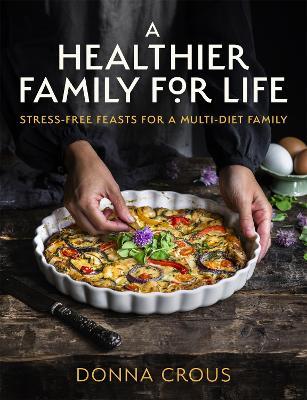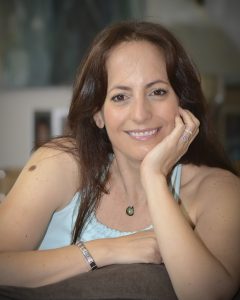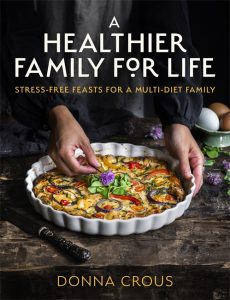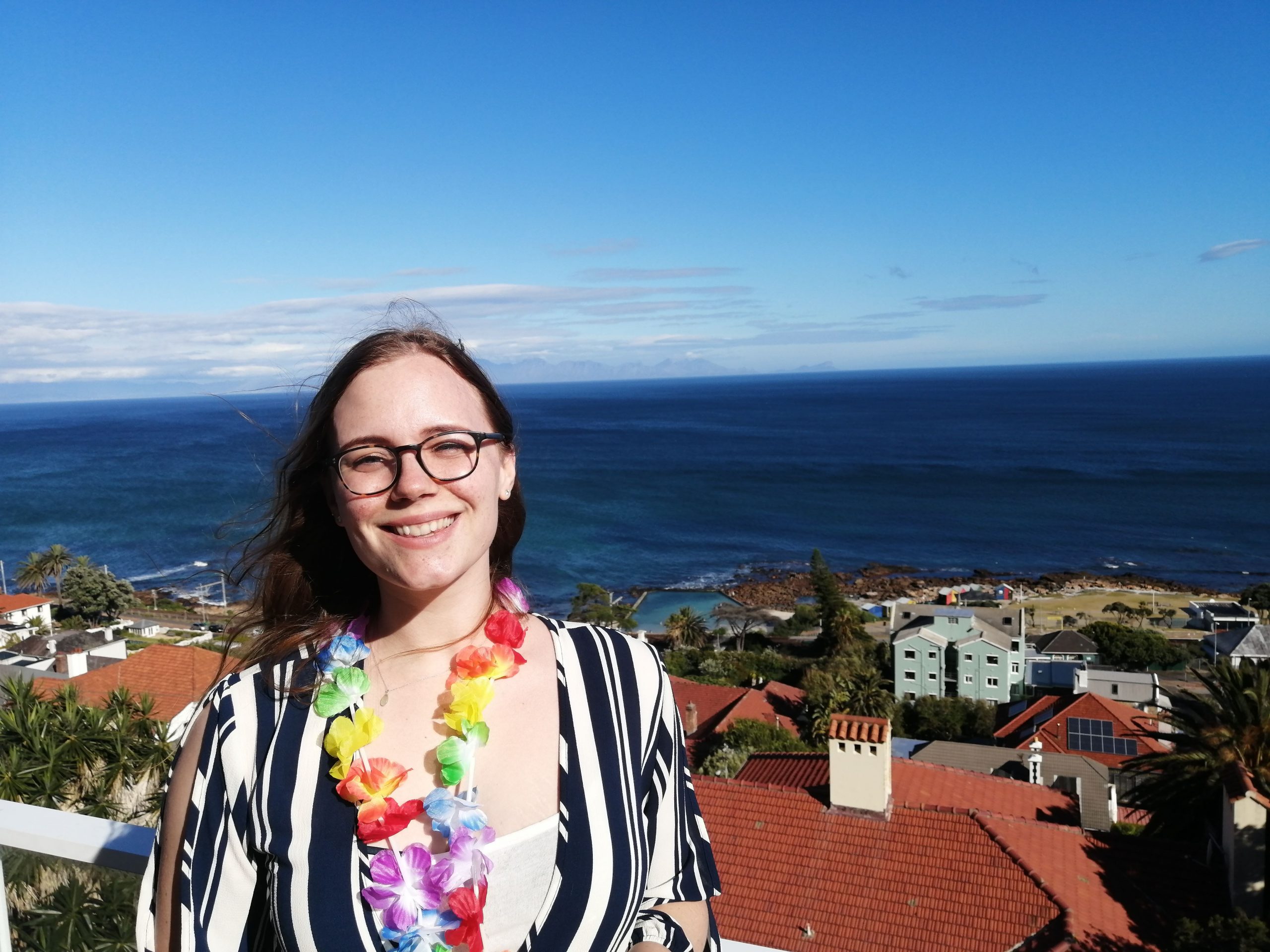“I’m tired of eating food and feeling guilty about it, for me it’s about being able to enjoy a slice of cake or pudding knowing that all the ingredients have a healthy function that my body will benefit from. “
In her recently published cookbook A Healthier Family for Life, expatriate Donna Crous encourages readers to challenge what goes into our food, where our produce comes from and what goes into growing it . She focuses on how real food and natural ingredients can still create colourful, exciting meals that, as well as satiate and offer proper nutrition, also evoke happiness and warmth with their nostalgic flavours.
View this post on Instagram
Cassava flour, arrowroot powder, coconut sugar, nutritional yeast flakes. These are a few of the many weird and wonderful sounding ingredients listed throughout Donna’s cookbook. Along with these interesting ingredients, you will find new, challenging recipes including Olive oil keto bread, Activated charcoal lattes and Gut-healing gummies, but you will also find comfort in the familiar recipes like Chicken, mushroom and leek pie, Dark chocolate and cranberry granola and Bobotie with yellow cauli-rice. What they all share, despite their differences, is the foundation of unprocessed, natural ingredients that go into making them so delicious.
View this post on Instagram
After starting out in nutrition and food coaching, Donna moved to the wonderful world of food photography, where she started recipe development, food styling and photography for her successful blog eighty20nutrition.com. Since then, Donna has won multiple Food Photographer Of The Year awards and is an ambassador for Nikon Europe. Although the sound of using strictly unprocessed, raw ingredients may sound daunting, Donna uses a gentle approach to introduce us to this new way of life, she has answered some of our questions about her new cookbook, as well as her food photography and what it takes to transition to a real food lifestyle. Keep reading to learn more about this incredibly inspiring woman!
Your cooking origin story is quite different from the usual “my mother taught me everything I know” trope. How did you start learning the foundations of cooking on your own?
Honestly it was total trial and error, there were some shocking meals that I produced and then really great ones that I had no idea how to recreate again. Initially I cooked from instinct, mainly influenced by what ingredients we had available at the time or recipes from magazines as my mum didn’t own many cookery books. As the years moved on and my interest in the kitchen grew, I started to build my own collection of recipe books and by then cookery shows on TV were starting to appear using a similar concept of “here’s a bunch of ingredients, now create a dish or two with them”. Current shows like MasterChef are brilliant for learning how to create a dish from a random selection of ingredients.
What is a dish that you made when you were younger that you were super proud of?
Chicken a la King was the dish I spent ages trying to master. It was always my favourite dish when we ate out, and I’d spend every mouthful trying to work out the ingredients and flavours. My recreations were always lacking one flavour layer that I couldn’t quite put my finger on. When I discovered the missing ingredient was sherry, it was a revelation. Yes, this is how we did it before Google!
About Donna’s Cookbook:
You speak about how your lives have changed since really engaging with unprocessed food. Just how important is it for our health to eat natural produce and create healthy meals?
Oh it’s absolutely essential! As a family, we just accepted that “normal” health came with aches and pains, weight gain, regular colds and flus and even acne, when actually they were all symptoms of our poor diet. Eating fresh, unprocessed food got us back in tune with listening to our bodies, and more importantly knowing when something isn’t quite right and needs to be checked. We learned that being healthy was not just about weight, but about having loads of energy, glowing skin, the ability to concentrate for longer periods of time, take on more work and for a non-exercising family we started to enjoy moving and getting outdoors more.
It really wasn’t easy, especially when my girls were little, I had to devote time to making fresh lunchbox treats, condiments like homemade tomato sauce and mayonnaise and ensuring they had treats for school when others were celebrating birthdays with cakes and sweets. It needn’t be hugely expensive. Try purchasing fruits and veg from as local as possible (think farmers markets and food markets), that way the produce hasn’t travelled far avoiding the carbon burden of long distances or freight travel. Make sure it is seasonal, having been picked or harvested at its prime so it is more nutritious and delicious. Supporting or getting to know local farmers is key to sustainability and an understanding of how the food is grown.
View this post on Instagram
What are a few of your favourite ingredients to use?
I have so many that have become staples in many of my recipes. Coconut milk/cream works beautifully in both savoury and sweet dishes. Vanilla extract or other extract flavours like rose or even orange blossom are great for adding a “sweeter” taste and boosts of flavours without using sugar. Cassava flour is a fantastic grain and gluten-free alternative to regular flour, and psyllium husk works as a gluten substitute for baking.
How much do your South African roots influence the work you do and recipes you create?
Hugely. I went to boarding school in Polokwane and our food was really good. Our matron served many dishes like melkkos for Sunday dinners, bobotie, rusks and our all-time favourite melktert, so I was exposed to these delicious traditionally made dishes through school and they were my favourite meals. Many of these recipes are comfort foods for me and although they are not very healthy, I was determined to include healthier versions in my cookbook. Being based in the UK, I also know how many of us crave our touch of home and, in particular, I really wanted to share some of our South African heritage with others overseas.
What is wonderful about this cookbook is that you gently and respectfully introduce people to all different types of ingredients, their uses and advantages. What is special about using raw, unprocessed ingredients in cooking? How does it change the final product?
I’m tired of eating food and feeling guilty about it, for me it’s about being able to enjoy a slice of cake or pudding knowing that all the ingredients have a healthy function that my body will benefit from. I’ve learned to really taste my food, appreciate it and, most importantly, know (and learn to pronounce!) every ingredient that it contains. Working with farmers has taught me to respect where and how our produce is grown and what goes into getting those ingredients into my kitchen. I’m strongly opposed to substitutes like artificial sweeteners and processed meat alternatives, and feel that any ingredient that I serve my family must have a nutritional function in some way.
View this post on Instagram
About Donna’s food photography:
It feels like any industry at this moment in time is super saturated. Do you feel this is true for the food photography & food styling world?
Definitely not. As long as we keep buying cookery books, magazines or products from either bigger brands or small and new brands, there will be a need for food photographers and stylists. I won’t lie, finding clients in this industry that value your work and are prepared to pay what you are worth is tough. Never accept work for free samples or “exposure” as these don’t pay the bills and set the expectation for future work. The key in this industry is making sure that work is delivered on time and not letting emotions get in the way. Starting a blog was the best thing that I ever did, it gave me my own platform to create what I wanted and at the same time it was an online portfolio for potential clients.
What is your advice for creating unique content that will be seen and enjoyed, as opposed to falling into a copycat rhythm of content we so often see online?
It’s really tough not to recreate something that you’ve seen on social media, but in some ways it’s better to almost work with blinkers on and not know what the current trend is, as unique content definitely stands out. I use social media to get my work out publicly and to connect with others in my industry, I spend very little time looking at what others are doing as that is a rabbit hole that I can’t afford to venture down. It also makes me feel insecure about what I’m doing or not doing, which is not healthy for any content creator.
Who of your fellow peers do you look to for inspiration, guidance and support?
It’s incredibly important to connect with others in the industry, in a non-competitive way. It can be lonely working for yourself, and having a peer who understands how things function is essential. Getting an answer from anyone in the industry was almost impossible when I was starting out, so I really struggled. Thankfully nowadays there are a number of Facebook groups that offer this kind of support and encouragement.
In SA my go-to peers are Sam Linsell, Hein van Tonder and Di Bibby, all incredibly talented cookbook authors, photographers and stylists. My close friend Bea Lubas is someone I can always bounce a business question off. We are both based in the UK, have done regular public speaking appearances together and share the same agent. We can spend hours chatting about business decisions and what to do in those tricky situations with clients. I also love working with Kimberly Espinal, Anna Wierzbinska, Matt Inwood and Joanie Simon, and my biggest inspiration and friend is Eva Kosmos Flores.
What is the secret to recipe development? How does one create a unique recipe when there are already so many out there?
I think this question also applies to food photography. Use what you have available, what you love and what fires up your creativity; don’t look at what everyone else is doing and try to build off of that. Whether it’s opening the fridge or pantry and using the ingredients on hand, or using props for a shoot that you have in your kitchen or prop cupboard. For me, it’s always been about what I (and my family) like to eat and how I want a picture to look. Both my food skills and photography are self taught, and in a way that is so empowering because I didn’t know the rules when I started, which meant I wasn’t afraid of breaking them.
What are you currently working on?
We recently moved from Surrey to Jersey in the Channel Islands. It’s an incredible agricultural island and getting to meet, know and work with some of the local farmers is really important to me. I’m also plotting a new book, along the same lines just featuring more vegan, vegetarian and pescatarian dishes to encourage a more climatarian approach to food.
Where can readers buy your book?
It’s available at all good bookstores in South Africa, and on Loot and Takealot. Overseas in most major bookstores and Amazon in the different regions. I’m also available on Instagram @Donnacrous and happy to answer questions or just to say Hi.
Find Donna on Instagram @Donnacrous
Read her award winning blog Eighty20nutrition
Order Donna’s new cookbook: Loot Takealot
ALSO SEE DONNA’S RECIPES:




